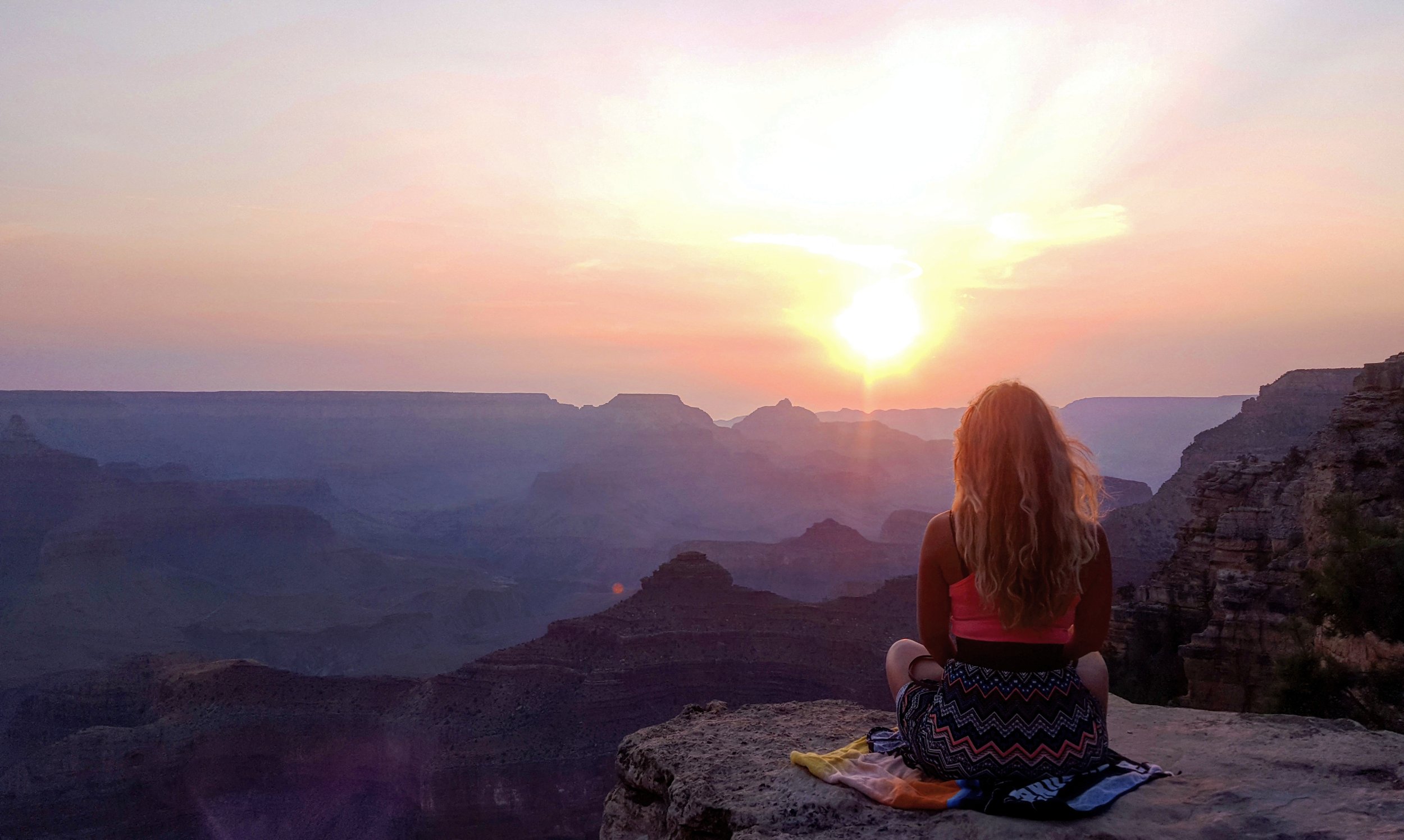Solo Hiking by Jen King
Jen King, a Hike the World Ambassador, went solo hiking in Acadia, Utah and Arizona recently and she shared her thoughts on how to properly hit the trails alone.
Hike the World encourages everyone to get outside and explore the wilderness while promoting safe, ecological and moral practices. Hiking alone can be daunting at first, but it delivers an exhilarating and rewarding experience. Learn Jen's "Three Knows" so you can hike responsibly and safely.
-----------------------------------------------
One of the things I get asked frequently about my hiking adventures is “how do you hike alone?” Most people seem concerned for my safety, fearing that someone solo hiking is in great danger. As a nurse, I work three long days a week and tend to have a lot of weekdays off. Because of this crazy schedule, it is not always an option to have someone accompany me. While I love hiking with my family and friends, I’ve come to find solo hiking is also quite enjoyable as it allows me to hike at my own pace and adventure wherever I desire. This became apparent during my first solo hiking trip to Acadia and was further reinforced during a second solo hiking trip to Utah and Arizona.
Apparently when not under anyone’s supervision, I will just hike for 12 hours at a time, seeing as much as my little legs will allow me. And the ability to decide when, where and for how long I want to hike is almost as liberating as the wild views I get to see. That being said, solo hiking can have its risks and is something that should be done with great consideration. There are a few rules I always follow when solo hiking on day trips, and most of them are the result of personal learning experiences.
Know the Three Knows: Know your trail, know your limits and know your threats
Knowing your trail means knowing what to expect on your adventure. For solo hiking I strongly recommend a popular, easy to navigate trail. Popular trails tend to be clearly marked, better groomed, and will usually have people around even on less busy days. And while you may be looking to get away from the crowds, it is safer to be within earshot of someone when you are in need than in total remoteness. Knowing your trail also means knowing the distance, the total elevation gain, level of difficulty, points of interest, and possible obstacles (river crossings, scrambles, boulder fields) you will encounter on your hike.
These are important things to consider and should be combined with your second Know – Know your limits. It is very important to honestly assess your capabilities when considering your trail options. Hiking can be challenging but it should be enjoyable and survivable. If you have trouble climbing a flight of stairs, maybe a 2-mile hike with an elevation gain of 4,000 feet isn’t meant for you just yet. Seriously consider the length, elevation, trail conditions and weather for your hike and be very honest with yourself.
The final Know, know your threats, applies to anything that you may encounter on your hike that could cause you harm. Bears, mountain lions, rattlesnakes, humans and weather are all things considered. I was once so set on doing a hike out in Utah that I only looked at the length and the overall trail conditions. It was one of the most beautiful hikes I have ever done, but boy was I surprised to read about the mountain lion sightings a year later. This wasn’t only foolish; it was potentially dangerous. Know which predators (and all animals) are common in the area and prepare accordingly. I recommend carrying bear spray (or pepper spray if your state allows) and any other items for self-defense and I advise against approaching any of these animals if found. Weather, too hot or too cold, can also be a killer so dress accordingly and make sure to bring enough water.
Stay Connected while Off the Grid
Social media can be an absolute gift when it comes to hiking. Most importantly, it allows the hiking community to come together and communicate experiences, views, and important tips. One thing I love to use social media for is to determine trail conditions and quality of viewpoints. I’m more than willing to return the favor, however, I do not share anything about my whereabouts until after I have completed the hike. You never know who is watching your social media account, and you do not want to let people know when you are alone and isolated. On the flip side, I always make sure to let at least one if not a couple loved ones know where I am hiking, when I am leaving the trailhead, how long the hike should take, when I am expected back, and I check back in once I’ve made it back to my vehicle. I also make sure my phone is fully charged before departure and leave my GPS on so that I can access Google Maps and AllTrails in case I get lost (and, you know, to take lots of pictures).
Be Over Prepared
No matter how big or small a hike may be, I always bring my daypack with an excess of necessities. The things you can never skimp on include water, snacks, and layers. I always bring three times the amount of water I may need, enough food to feed me for at least a day and an extra jacket and hat in case I come across inclement weather. I’ve never run out of food or water yet, and I was able to share when I’ve come across those less prepared (like a beautiful pitbull at Tammany once whose owner didn’t bring enough water or a bowl!). Also hidden in my daypack? Bug spray, SPF lotion, two bandanas for hot weather emergencies that can double as splints or tourniquets, a large knife, a flashlight, a headlamp, a first aid kit, a dog bowl and a compass with a whistle. For longer adventures there are definitely more options to add, but these are just the things I carry around for my day-trips.
These tips can be applied to both group hikes and solo hiking. It may seem like a lot at first, but soon these steps become innate and you’ll find prepping for a new day-trip adventure becomes second nature. Solo hiking can be intimidating at first, but it provides a lot of possibilities for those willing to safely go forward alone. You do not have to cancel an adventure if a friend isn’t available, you can go at your own pace and stop as many times as you’d like, and you can adventure as long as your legs will carry you. And if you are ever concerned about your safety beyond these few tips, you can always do what I did – adopt a very large, mountain-loving dog!
-----------------------------------------------
Eager for more of Jen's adventures? She will be providing us with updates as she spreads her love of the outdoors. You can also follow her on IG @jennalexluv. Interested in becoming an ambassador for Hike the World? Click here for more information.






